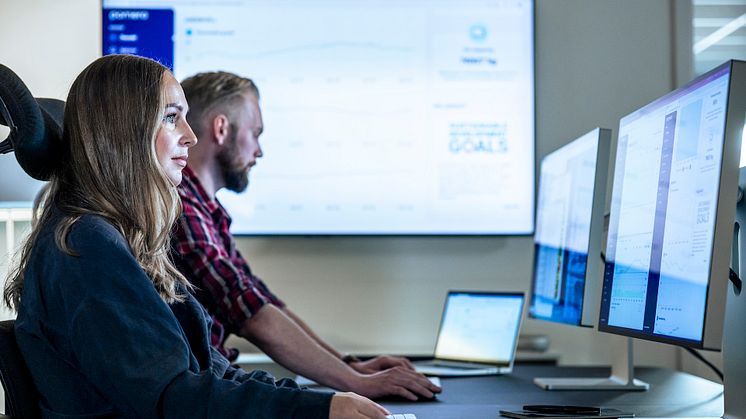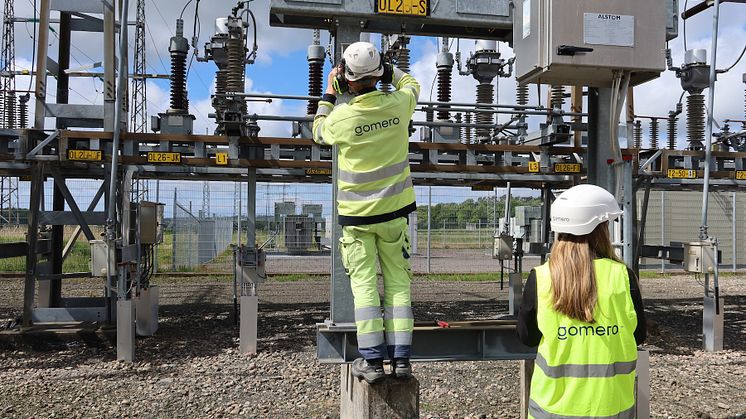
Blog post -
Digitalization from POC to Deployment: Five Challenges to Prepare For
Why digitalization projects that work well at small scale can become complex when implemented at full scale
Digitalization projects in the energy sector often follow a familiar pattern. A proof of concept project is conducted with promising results. The technology works as expected, data is collected, and initial analysis show clear benefits. Management makes the decision to scale up.
But then something happens. What seemed straightforward in the pilot phase proves to contain more layers of complexity when the project is to be implemented broadly. Through our work with energy companies across different markets, we at Gomero have seen this pattern repeated, and identified five areas where challenges often arise when organizations take the step from proof of concept to roll-out deployment.
1. Technical complexity grows exponentially
A POC with five or ten connected devices provides a picture of how the technology works, but when the same solution must handle hundreds or thousands of data points from facilities across large geographical areas, new challenges emerge. Communication solutions that worked excellently in testing can prove less reliable in production environments, and data volumes that were manageable during the pilot phase can overwhelm systems when multiplied.
What seemed like a simple technical implementation proves to require more robust infrastructure.
We have seen this in our own work over the years. An important insight we've gained is to design for the scale the customer will actually need, not just the scale required to prove the concept. This means that from the beginning, we build with the same robustness required for thousands of connected units, even when the customer starts with twenty.
2. Organizational structure creates new challenges
POC projects are often driven by smaller, focused teams with the mandate to test and experiment. But when the project is to be scaled up, more parts of the organization are naturally involved - IT operations must integrate new systems, security departments need to approve new communication protocols, and field personnel must be trained in new ways of working.
Each department has its own priorities, systems, and processes. What worked smoothly for a dedicated project team suddenly has increased requirements, more stakeholders, and more decision points. Communication that was simple in a smaller group becomes complex when more functions need to be coordinated.
This is completely natural as organizations grow and mature in their digitalization. Successful implementations are often characterized by early identification of all affected functions and building bridges between different parts of the organization from the beginning.
3. Integration with existing systems
During the POC phase, the focus is on proving that the new technology works, but in production environments, new solutions must be integrated with the existing system architecture. Asset management systems, work order systems, financial systems – all of these must be able to receive and use the new information.
Legacy systems have rarely been built with modern data integration in mind, which means APIs may be completely missing and security policies may block new communication. Data that needs to be moved between systems may be structured in ways that require extensive mapping and transformation.
An approach we use is to treat integration as a fundamental requirement, not as a later step. Gomero’s platform is built to both function standalone and integrate deeply with the customer's existing infrastructure, depending on their maturity level and needs.
4. Data becomes information – but who does what?
POC projects often focus on showing that data can be collected and that basic analysis is possible. But in production environments, large amounts of information flow in every day, and then new questions arise: Who will analyze all this data? Who acts on the insights? Who is responsible for maintaining systems and ensuring data quality?
Many organizations discover that they have built effective systems for data collection, but haven't thought through how the information will be used in daily work. Data ends up in systems that few have time to review regularly. Reports are generated but not read. Insights are identified but not followed up with concrete actions.
This is one of the reasons we focus as much on presentation and visualization as on the data collection itself. Different roles need different information: maintenance technicians want operational data that can generate work orders when action is needed, environmental managers need trend and compliance data for sustainability reports, and procurement departments want documentation showing which assets perform best over time.
5. New possibilities require new ways of working
Perhaps the most subtle challenge is when organizations try to use new technology within old frameworks. More data is collected, but decisions are made the same way as before. Access to predictive insights is gained, but work continues reactively.
This is understandable – existing processes and structures have developed over time and often serve important purposes. But to get the full benefit of digitalization often requires changed ways of working as well.
We see this most clearly in the transition from scheduled to condition-based maintenance. The technology for monitoring the actual condition of assets exists, but actually making decisions based on this information instead of predetermined schedules requires both new competence and new thinking.
Building for scale from the beginning
These challenges are not inevitable, but they are common. Our experience from digitalization projects over many years is that successful implementations are often characterized by thinking about the whole picture from the beginning.
This means designing technical solutions for the scale that will actually be needed. Involving all relevant functions early in the process. Planning for integration from day one. Thinking through how data will be used before starting to collect it. And being prepared that new technical possibilities may require new ways of working.
When energy companies now transition from reactive to predictive maintenance, from isolated systems to integrated platforms, from manual reports to automated insights that drive both operational actions and strategic decisions, this holistic view becomes particularly important. It's not just about digitalizing existing processes, but about building operations for the future's demands on efficiency, sustainability, and reliability.
Want to discuss how your digitalization project can successfully take the step from pilot to production? We work with energy companies worldwide to build scalable digital transformation.





